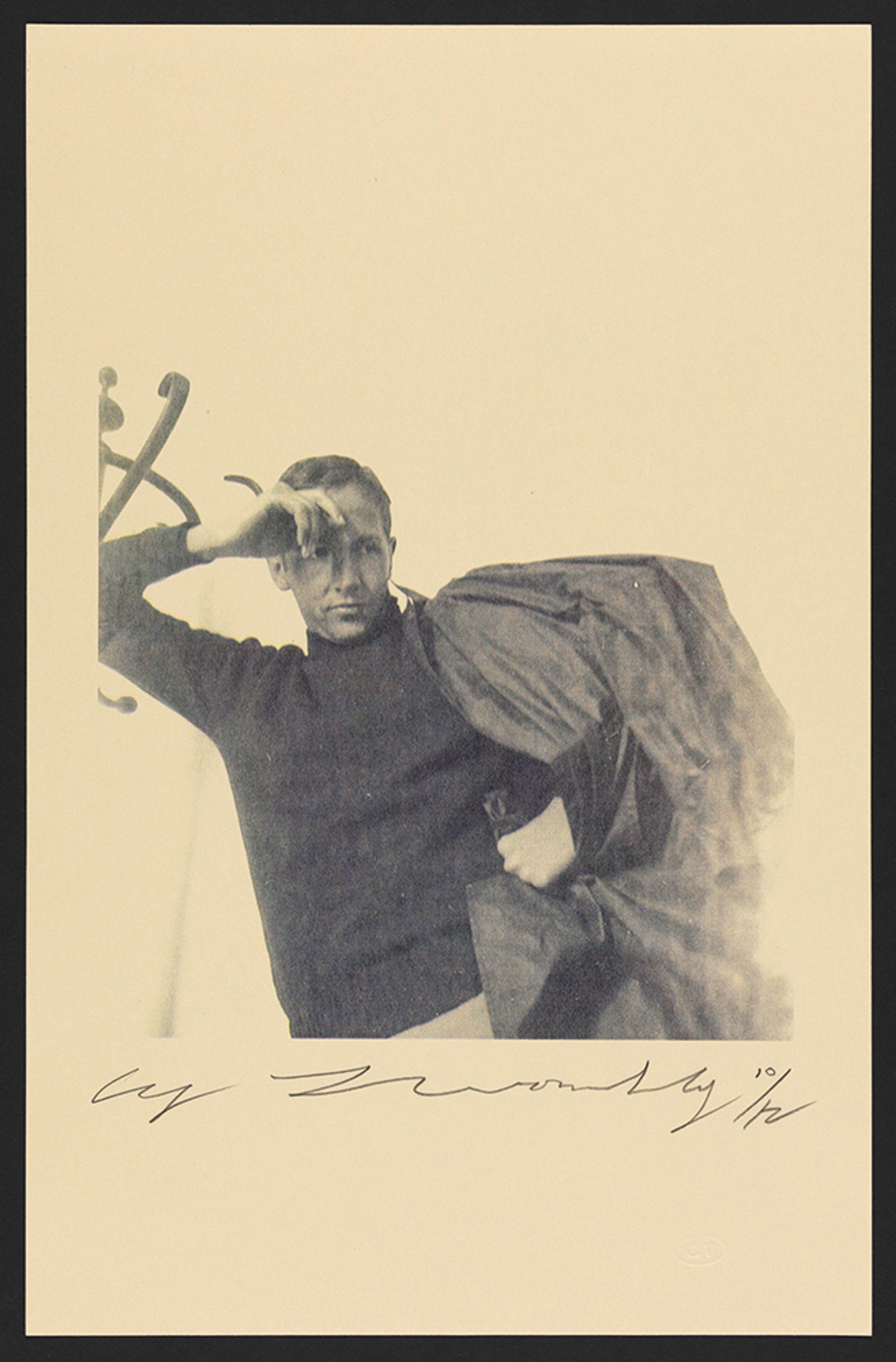Robert Rauschenberg, the tirelessly experimental and collaborative American artist who died in 2008, would have turned 100 this year on 22 October. In honour of his centenary, the New York-based Robert Rauschenberg Foundation is spearheading a globe-spanning programme of exhibitions, publications, performances and more, beginning this spring and continuing well into 2026.
The first major show under the auspices of the programme, opening on 10 April, is Five Friends: John Cage, Merce Cunningham, Jasper Johns, Robert Rauschenberg, Cy Twombly, co-organised by Museum Brandhorst in Munich and Museum Ludwig in Cologne. It brings together more than 150 objects including works of art, archival material, costumes, stage props, scores and a performance programme.
John Cage and Merce Cunningham had collaborated before meeting Rauschenberg, “but the three of them together created something totally different than what the two of them had done before,” says Courtney J. Martin, the executive director of the Rauschenberg Foundation. “And similarly for Rauschenberg, working with Cy Twombly really helped him develop his small-scale sculptures in new ways.” Martin adds: “Rauschenberg is the linchpin with all of them and I think we might come away from this show thinking radically different things about all of them.”
Everyone at the table
The show will make extensive use of the co-organising institutions’ permanent holdings: Museum Brandhorst has a large collection of Twombly’s work, while Museum Ludwig has the biggest collection of Pop art outside the US, including textbook examples by Rauschenberg and Jasper Johns. “Everyone has really come to the table for this show—the museums, the estates and Johns himself,” Martin says. “There are objects that have never been shown before; there are collectors that have previously been very, very cautious about showing some of the pieces from their collections.”

Cy Twombly’s 1952 image of Robert Rauschenberg is in Museum Brandhorst’s collection © Cy Twombly Foundation
The centennial celebrations are extending to the commercial sector, too. This month, the Miart fair in Milan is taking inspiration from the “fundamental principles” of Rauschenberg’s work to inform its entire 2025 edition (4-6 April). The fair’s artistic director, Nicola Ricciardi, “told me he wanted the fair to use Rauschenberg as an idea because of collaboration”, Martin says. As a result, Rauschenberg works from the storied Luigi and Peppino Agrati Collection will be on view at the fair and in the Gallerie d’Italia in Piazza della Scala, while the Museo del Novecento will open an exhibition with eight of his works in dialogue with Modern Italian works. Martin adds: “That little kernel of interest on Nicola’s part has now given us another show.”
Meanwhile, in May, Gladstone Gallery is organising what it describes as “the first survey of Rauschenberg’s sculptural practice in 30 years” to coincide with Frieze New York, with objects spanning the 1950s to the 1990s. And in the autumn, Thaddaeus Ropac will open a Rauschenberg exhibition at its Paris space to coincide with Art Basel Paris in October.
Although he was born in Texas and spent much of the later years of his life on the island of Captiva on Florida’s gulf coast—where his foundation runs an artist-in-residence programme that will reopen this spring after taking a direct hit from Hurricane Milton in October 2024—the second big museum exhibition in the Rauschenberg centennial programme will highlight his decades-long relationship with his adoptive hometown of New York. Robert Rauschenberg’s New York: Pictures from the Real World at the Museum of the City of New York in September, will focus on images from two eras of the artist’s life: photographs he took in the 1950s when he first arrived in Manhattan and was seeing the city as a newcomer, and photos from the 1980s, when he returned and chronicled its accelerating changes.
“The things he’s interested in, in the 1950s, is the grittiness of the city, the advertisements, the things that are uncanny about the city,” Martin says. “Then he takes a break [from photography] and in that break he becomes not only a known artist, but also a New Yorker. Then he starts spending a lot of time in Florida, so when he gets the new camera and comes back, it’s almost as if he’s like, ‘Oh, this is what’s happening in the city when I’m not here.’”
Beyond the exhibitions
The centennial celebrations will not only take the form of special exhibitions. The Rauschenberg Foundation has thus far awarded more than 20 grants to museums from Madrid and Stockholm to Honolulu and Toronto to organise displays of Rauschenberg works in their permanent collections. The first volume of a digital catalogue raisonné, covering works made between 1948 and 1953, will also be released this year.
The same month as the artist’s 100th birthday, the Yale University Press will publish I Don’t Think About Being Great: Select Statements and Writings, a book collecting 100 passages from Rauschenberg’s rarely seen writings. In one letter from the 1970s that is in his foundation’s archives, contemplating the artist’s role in times of crisis, Rauschenberg concluded: “Art has always been a necessary ally to justice and freedom.”
Round the world with Rauschenberg
• Rauschenberg and the Novecento, Museo del Novecento, Milan, 5 April-29 June
• Five Friends: John Cage, Merce Cunningham, Jasper Johns, Robert Rauschenberg, Cy Twombly, Museum Brandhorst, Munich, 10 April-17 August; Museum Ludwig, Cologne, 3 October-11 January 2026
• Robert Rauschenberg, Gladstone Gallery, New York, 1 May-14 June
• Robert Rauschenberg’s New York: Pictures from the Real World, Museum of the City of New York, 13 September-22 March 2026
• Robert Rauschenberg: Fabric Works of the 1970s, Menil Collection, Houston, 19 September-1 March 2026
• Robert Rauschenberg: the Use of Images, Fundación Juan March, Madrid, 3 October-18 January 2026
• Robert Rauschenberg and Asia, M+, Hong Kong, 22 November-April 2026
• Robert Rauschenberg: Image and Gesture, Kunsthalle Krems, Austria, March-October 2026


![Rauschenberg’s Untitled [Mona Lisa] (around 1952) is part of the Menil Collection © Robert Rauschenberg Foundation](https://cdn.sanity.io/images/cxgd3urn/production/947831916f4e06d3ca6a611bde78597157b6ff81-1134x1420.jpg?w=1200&h=1503&fit=crop&auto=format)